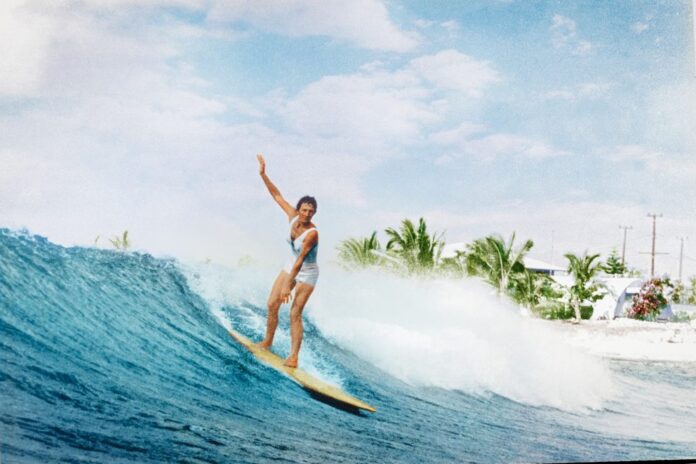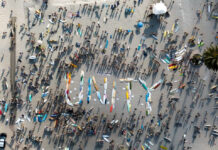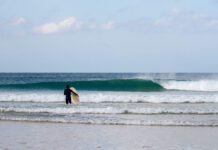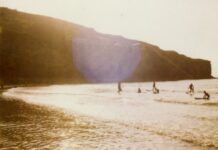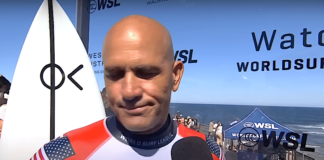In 1956, my mother decided to take Jimmy Wong up on his offer. Our family, plus Gloria’s Honolulu friend Mele Kukea (Ethel and Joe’s daughter and friend), drove west thirty-six miles from Honolulu out along the leeward side of Oahu to visit Jimmy and his wife, Emily. The drive took us past the plantation towns of Aiea, Waipahu, and ‘Ewa. At that time, sugarcane fields stretched from one town to the next. After a rightward bend in the two-lane Farrington Highway, just past ‘Ewa and the Campbell estate, all of a sudden there stretched before us a series of round hills, or volcanic tuf cones, that jutted out into the cobalt sea. We continued along the rugged seashore, past the sleepy towns of Nanakuli, Maili, and Wai‘anae. Gray-green mountains rose to the right, punctuated by spacious, mile-wide valleys. We passed bountiful farms, wooden shacks, and Quonset huts, all surrounded by gardens with swaying coconut palms and plumeria trees flowering in pinks, yellows, and whites. We witnessed country living at its best; pigs, chickens, horses, and dogs lived largely un-penned in yards and fields.
After an hour’s drive, we arrived at Makaha Beach. The Hawaiian word “makaha” means “fierce, savage, ferocious.” Legend has it that a group of Hawaiian bandits once lived in the area, robbing travellers and generally pillaging. This storied area lies at the foot of a great green valley carved like an amphitheatre into the backside of the spectacular and most sacred spot on the coast, Mount Ka‘ala. At 4,040 feet, the mountain is at the head of the M?kaha and Wai‘anae valleys, the highest peak on Oahu, and celebrated in many a traditional song. Its craggy volcanic summit sits starkly against an impressive backdrop, an azure sky with phantom-like clouds.
Makaha was originally home to native Hawaiians who farmed, fished, and later traded with schooner ships anchoring in the bay. The M?kaha stream gave life to the lush valley, which is also home to the Kane‘aki Heiau, a lava-rock temple. The heiau, which the Bishop Museum restored in the 1960s, is said to be the best-preserved temple on Oahu. Built in the 1600s, it is dedicated to Lono, the god of agriculture and fertility. A large stone there, Pohaku o K?ne (Stone of K?ne) is named in honor of another major god, regarded still as the guardian of the heiau. Kamehameha the Great is said to have worshipped here, and the site was in use as a war heiau until his death in 1819.
After overzealous traders wiped out the native sandalwood crop, M?kaha Valley became home to sugar and coffee plantations. In 1898, a single-gauge railroad was put in to link the Wai‘anae Coast with Honolulu and also to transport sugar in the other direction, around Ka‘ena Point, to the processing mill in Kahuku. In 1946, the sugar plantations of Makaha and Wai‘anae closed because of a lack of water. In 1947, the M?kaha ahupua‘a (a pie-shaped area of land running from the top of the mountain to the ocean) sold for $1,250,000 to Chin Ho, whom Time magazine called Hawaii’s Chinese Rockefeller. Chin Ho sold off the prime beachfront property in order to develop projects in the valley.
But Makaha was still mostly untouched in 1956. M?kaha Valley levelled out at the Pacific coastline, and just below a craggy mountain softened by grasses lay a half-mile crescent of clean- swept, white-sand beach—the most beautiful strip Betty had ever laid eyes on. The water was clear and clean, with multiple hues of turquoise and teal. Fish abounded. The water temperature averaged seventy-four degrees. The air was dry and sunny in the daytime and balmy at night.
We found the Wongs’ address on Farrington Highway and turned into the driveway. The Wongs were quite a couple. Jimmy, in addition to being a police detective and regular surfer, was a musician and singer. Emily was an accomplished hula dancer and a hostess at the Willows Restaurant in Honolulu, famous for its sprawling grounds, koi fish ponds, shrimp curry, and coconut pie. Their three children included James Ka‘upena Wong, soon to become one of Hawaii’s premier chanters.
After a brief welcome greeting, Jimmy and Emily gave us a tour of their Lindal Cedar house, proudly showing off each little bedroom. Keeping with Hawaiian-style hospitality, they invited us to have something to eat. Jimmy motioned us over to their dining room table while Emily surprised us by pulling out a coconut pie from her refrigerator. We devoured it over our afternoon conversation.
After we finished eating, Jimmy stood up from the table, smiled, and said, “Come, Betty.” The diminutive police detective walked out the door, onto his front lawn. My mother followed, and we followed her. Jimmy walked to the beach and a few steps along the sand, to an overgrown weed-and-sunflower-covered beach lot, one with the same ocean view as Jimmy and Emily’s. He pointed to a small For Sale sign posted on the ocean side of the property.
Gloria came running up from the beach, where she was playing with Mele Kukea. Both of the curious girls followed us up the gradual bank of sand. My mother walked up to the sign on the property and stood for a moment, looking around. Since her childhood trip to Santa Monica, she had dreamed of living near the ocean. She turned around and looked at Mount Ka‘ala and the steep surrounding mountains. Then she took another look at the white-sand beach in front and the surfable waves breaking of Kepuhi Point. Betty paused for a moment and then leaned over and yanked the For Sale sign out of the ground. She shook the loose, sandy dirt of the stake, held the sign over her head, and said, “This has to be mine.”
She remembered the advice Dad Center’s realtor wife, Lily, had given her in response to the abundance of land for lease in Honolulu: “If you ever come across a piece of fee-simple property on the beach, if at all possible, buy it.”
Back in Waikiki, first thing Monday morning, Betty and Ron contacted Mr. Fitzjohn, the property owner, and met with him to make a deposit. Betty and Ron paid $13,000 for the thirteen-thousand-squarefoot lot. (Later, Betty was able to buy some additional footage on the street side, increasing the lot size to sixteen thousand square feet.)
Betty could barely wait to get back to Makaha and surf the waves. She called Ethel Kukea and Clarence Maki to tell them about Makaha— the surf she had discovered and the property she had just bought. They decided to drive out on the following weekend. During the 1950s, there were no hotels or places to rent for the night, so everyone planned to camp on the beach.
Saturday morning, my father said he had work to do and would stay home. Making jewellery was my father’s joy and a bit of an obsession. Besides swimming, his main recreation was smoking cigars and reading Kipling. Gloria, too, was a bookworm, but she enjoyed the beach. By this time she was a twelve-year-old, more chubby than athletic. I was a tall, gangly sixteen-year-old and somewhat hesitant about leaving Waikiki surf for the unknown, but game. My mother, now forty-three, was in prime physical shape. We packed up our beach clothes; loaded our surfboards, some food, and minimal camping equipment into the Caddy; and set of for a Makaha that would soon be ours.
When we arrived at the public beach, no one else was out on the sand or in the water and not a single car was parked. We had the place to ourselves. We parked on the side of the road so we could easily unload supplies. Our friends pulled their cars in next to ours. Anne and George Lamont arrived fist. Ethel and Joe Kukea brought their three children, and Clarence Maki brought his wife, Edna, and their son.
We measured the waves by the face, in comparison with the height and stance of a person riding the wave. The waves were around four feet high and perfect for the adult surfers. Gloria and I lay on the beach and enjoyed the sun, taking an occasional swim to cool off. The younger Kukea kids swam and played in the shore break, splashing and catching little waves.
In the late afternoon, we all gathered driftwood scattered along the beach, and Betty made a fire. She was the designated cook for the teriyaki beefsteaks. Everybody had brought something to contribute: snacks, rice, salad, vegetables, and cookies. We had a feast on the sand.
After dinner, we stoked the bonfire and made s’mores, talking and listening to the sounds of the ocean in the background. The warmth of the fire on our bodies balanced the coolness of the night air. After a day in the sun and water, we tired early. Mother, Gloria, and I curled up in our blankets next to one another near the fire while the rest of the group adjourned to their makeshift tents. As we fell asleep, we watched a spectacular light show of shooting stars.
The first signs of dawn and the sound of breaking waves woke us up. Betty stoked the fire and began preparations for breakfast. Later, she cooked bacon and eggs that we ate with bear claws from the Alexander Young Bakery. After breakfast, we cleaned up and got ready for another day.
“Vicky,” my mother said, filling her greenish-blue eyes on mine, “we need to go surfing.

